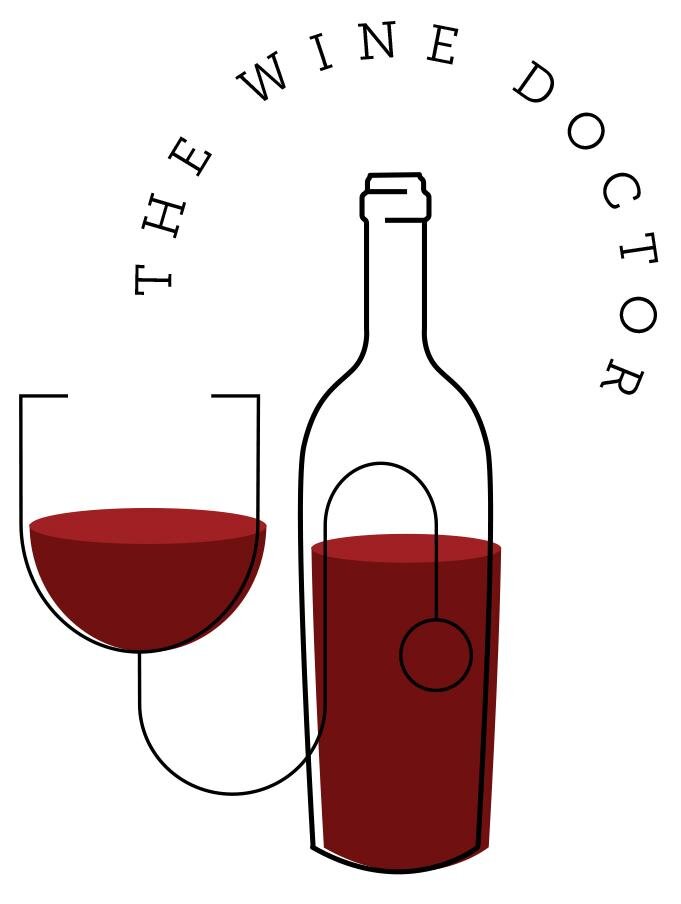Buen Camino
For those of you familiar with the Camino de Santiago, or the Way of St. James, you know this phrase. It simply means “Good Path”. For those that don’t know, the Camino is a network of pilgrimages leading to the shrine of the apostle Saint James in the cathedral of Santiago de Compostela in Galicia, in northwestern Spain. Tradition has it that the remains of the saint are buried there.
Obviously a topic that transcends this humble site, but a great segue into our latest journey: we are headed to Galicia, close to the Atlantic Ocean, in search of one of Spain’s signature wines: Albariño (“alba-reen-yo”). YES, another white wine, but a great one that you need to know if you don’t already. AND…we are coming into the red-dominated holiday season, so I chose to slip this refreshing, food friendly white in before the reds take over. Calendar heads-up: Next month the Wine MD celebrates its 1 year anniversary!
Ok Doc, but what’s the Camino connection? No better time for a map!
Now you see where I am (we are) going. Santiago de Compostela sits adjacent to the premier region for growing Albariño known as Rias Baixas. I won’t leave you guessing: it is pronounced “Rhee-yus By-shus”. Rias means a shallow fjord or inlet. We will be going to the medium green area known as Val do Salnés, considered the birthplace of Albariño.
A little bit of Albariño context is probably in order before we introduce our wine. Albariño is principally found in Spain and across the border in the Vinho Verde region of Portugal, where it is known as Alvarinho. Rias Baixas is known for its granite soils that have a lot of sand and other deposits, helping to drain this cool and wet area. These soils translate into a signature minerality and even salinity to the wine.
Note the unusual vine trellising used in the Valley of Salnés in Rias Baixas:
Proximity to the Atlantic mists and rain create the need for these concrete pergolas which keep the vines up high, allowing breezes to come through below and dry the grapes.
All of this adds up to a white wine with a lean, sometimes zesty style that is versatile and enjoyable on its own or accompanying a wide range of foods.
For our wine, I selected an Albariño from the stable of wineries owned by or partnered with one of Spain’s well-known and respected wine visionaries, Jorge Ordóñez. Jorge is credited with reviving the planting, production and marketing of high quality Albariño, introducing it to the US in 1991.
Jorge Ordóñez at La Caña
Our wine: 2017 Bodegas La Caña Albariño. Should be widely available. About $18-19 retail. FYI the wine is named for the straw-like cañas (reeds or canes) that line the shores of the Atlantic inlets that carve into the coast of Galicia.
Bodegas La Caña Albariño
I know what you’re thinking: this label is not telling me a whole lot. Actually, for an Old World label, it is. Normally, an Old World label would tell you where the wine is from but not the grape(s). In this case, we do know it is an Albariño. Sharp Wine MD readers might ask “how do we know Albariño is the varietal, when you show us Old World wines like Chablis, which is a place, not a grape”? And that would be a good question, for which I do not have a good answer!
Check out this ancient church adjacent to the winery:
On to the wine!
This Albariño is sourced from 6 different vineyard plots, all planted in the 1960s-1980s, all organic and hand harvested. It is fermented 65% in stainless steel and 35% in neutral (used) oak. After fermentation, the wine spends 8 months ageing “sur lie”, or on its lees. We know from Wine 101 that lees are left-over dead yeast particles from fermentation. In this case, they are stirred up in the vat or barrel every week, helping to produce a sense of “weightiness” or increased body and complexity in the wine.
Tasting:
In the glass, the La Caña is deep straw color. On the nose, you get some citrus and for sure some pear aromas. Maybe a little unusual for this varietal, but I got a little ginger as well. Stay with me, its not a bad quality. That first sip delivers an initial hit of lemon zest and honeydew, often found in Albariño. Those give way to grippy minerality and saline on the palate, a direct result of the soils and maritime influence. That ginger thing? I think it was there in the background! Finally, you do get a little creamy sensation courtesy of the lees ageing.
Food:
Bring it on! Remember how we said Pinot Noir is your go-to wine for salmon? Well, Albariño was made for fish tacos (think salsa verde)! And a lot of other things, like any shellfish. Don’t stop there - reach for it with grilled fish or seafood risotto. And cheese - how about a salty feta?
Get the picture?
The Bottom Line:
Hard to go wrong with this one. Delicious and refreshing on its own, a great companion with food, you need to think of Albariño even though summer is in the rear view mirror. Give it a try, and let me know what you think.
Until next time…no matter what your journey, “Buen Camino”.
Cheers






